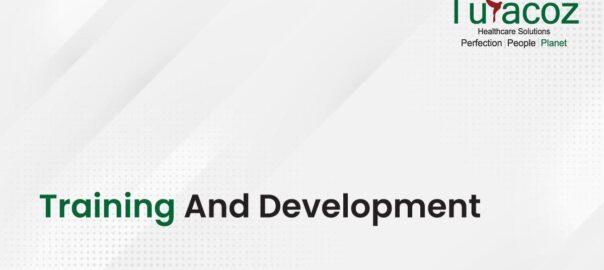Overview : Colorectal cancer is the abnormal growth of cells in the colon or rectum (parts of the large intestine) that has the ability to invade or spread to other parts of the body. Over 95% of colon cancers are adenocarcinomas and usually begin as polyp in the inner-lining of the colon or rectum.
Other names: Colon cancer, rectal cancer, or bowel cancer
Symptoms: The symptoms of colon cancer vary depending on the location of the tumor within the colon. Following are the symptoms of colon cancer:
- Rectal bleeding or blood in the stool
- Dark-colored stool
- Change in bowel movements
- Change in stool consistency
- Constipation
- Diarrhea
- Narrow stools
- Weight loss
Risk Factor: Although colon cancer is non-contagious, several environmental and inherent risk factors are responsible for the development of this cancer. Some common risk factors associated with colon cancer are:
- Increasing age
- Excessive alcohol use
- Obesity
- Being physically inactive
- Cigarette smoking
- History of inflammatory bowel disease
- Geneticmutations
- Colorectalpolyps
- Family history of colorectal cancer
Diagnostic tests and Examination:
- High-sensitivityfecal occult blood test (FOBT) : It checks for hidden (occult) blood in the stool (feces). The test does not directly detect colon cancer, but is often used in clinical screening for the cancer. FDA approved two types of FOBT: Guaiac (GFOBT) and Immunohistochemical (IFOBT) to detect heme. Studies have shown that early detection using GFOBT can reduce the number of deaths due to colorectal cancer by 15 to 33%.
- Sigmoidoscopy : Sigmoidoscopy is a procedure performed using a shorter flexible scope to examine just the sigmoid colon and rectum. Polyp removal and cancer biopsy can be performed through the sigmoidoscope. Studies have shown that people who have regular screening with sigmoidoscopy after age 50 years have a 60 to 70% lower risk of death due to cancer of the rectum.
- Colonoscopy : Colonoscope, a flexible lighted tube with a lens for viewing and a tool for removing tissue is used to examine the rectum and entire colon. Colonoscopy is generally considered to be more accurate than barium enema X-rays, especially in detecting small polyps. If colon polyps are found, they are removed through the colonoscope and sent to the pathologist. Studies suggest colonoscopy reduces deaths from colorectal cancer by about 60 to 70%.
- Barium enema X-ray : When colon cancer is suspected, lower gastrointestinal (GI) series (barium enema X-ray) is performed to confirm the diagnosis and locate the tumor. The barium outlines the large intestines on the X-rays. Tumors and other abnormalities appear as dark shadows on the X-rays.
- Advanced stool DNA technique/Cologuard ® : This test is an advanced stool DNA technique that detects altered DNA and/or hemoglobin in cancer cells. This is done through identifying nine DNA biomarkers in three genes that have been found in colorectal cancer and precancerous advanced adenomas. People identified as positive with this test are advised to undergo a colonoscopy.
Prevention:
- Early detection and removal of precancerous colorectal polyps before they turn into cancerous. Even in cases where cancer has already developed, early detection still significantly improves the chances of a cure by surgically removing the cancerous polyps before the disease spreads to other organs. Screening has the potential to reduce colorectal cancer deaths by 60%.
- Regular physical activity is associated with lower risk of colon cancer, but not rectal cancer.
- Current dietary recommendations to prevent colorectal cancer include increasing the consumption of whole grains, fruits and vegetables, and reducing the intake of red meat.
- Use of medications such as aspirin also appears to lower the risk of colon cancer. The use of combined estrogen and progesteronein hormone replacement therapy lowers the risk of colon cancer in postmenopausal women.
Management: Depends on various factors, including the person’s health and preferences and most importantly the stage of the tumor. When colorectal cancer is caught early, surgery can be curative however, when it is detected at later stages this is less expected and the treatment is often directed at palliation, to relieve symptoms caused by the tumor and keep the person as comfortable as possible.
- Surgery: If the cancer is detected at a very early stage, it may be removed during a colonoscopy. This can either be done by an open laparotomy or sometimes laparoscopically. The colon may then be reconnected or a person may have a colostomy. Robotic surgery, where a surgeon sits at a control panel and operates very precise robotic arms to perform the surgery. This type of surgery is also being studied to see if it is effective as standard surgery.
- Chemotherapy: In colon and rectum cancer, chemotherapy can be used in addition to surgery in certain cases. The decision to add chemotherapy in management depends on the stage of the disease. New ways to combine drugs already known to be active against colorectal cancer, such as irinotecan and oxaliplatin, to improve their effectiveness.
- Radiation therapy: Patients who have previously been treated with chemotherapy, there is evidence that selective internal radiation therapy (SIRT) can prolong time to progression of non-resectable colorectal metastases in the liver.Radiotherapy decreases 50% of recurrence of rectal cancer, improves quality of life and increases survival by 6-12 months for patients with advanced disease.
- Palliative care: Palliative care is medical care which focuses on treatment of symptoms with serious illness for improving the quality of life. It is recommended for a person who has advanced colon cancer.
Latest in Colon Cancer Research
Current research into cancer immunology may lead to advances in gene therapy and prognostic markers may be useful in identifying those tumors with a high recurrence rate:
- Colorectalpolyps and tumors can release cells and DNA into the bloodstream as well as into stool. Researchers are studying whether the presence of an altered geneSEPT9 in blood can be used to screen for early-stage colorectal cancer.
- New approaches which avoid the need for thorough cleansing of the colon, required for ‘virtual colonoscopy’, are being studied and developed. One approach is ‘fecal tagging’ with a contrast agent that is ingested over several days before the procedure. This technique is known as electronic cleansing (EC) which allows fecal material in the colon to be differentiated from colon tissue and aids in removing fecal material that is tagged by the agent.
- Following lab tests OncotypeDx™ Colon Cancer Assay, ColoPrint™, and ColDx™ were developed to help predict the recurrence of colorectal cancer even after treatment.
- Colorectal cancers that have gene changes known as microsatellite instability (MSI) have been found to be more likely to respond to the anti-PD-1 drug pembrolizumab (Keytruda®). A large phase II registration study (KEYNOTE-164) is ongoing to evaluate the efficacy and safety of pembrolizumab based on MSI status in patients with previously treated advanced colorectal cancers, and a phase III study (KEYNOTE-177) in a treatment naive patient population is also planned.
Did You Know?
- March is colon cancer awareness month and doctors across the country are trying to remind patients the importance of screening for cancer.
- As per WHO, colon cancer is the third most common cancer in men (10.0% of the total) and the second in women (9.2% of the total) worldwide.
- Colon cancer risk is tied to red meat consumption. European study reported that 478,000 men and women found those who ate about five or more ounces of red meat per day were about 33% more risk to develop colon cancer.
- Research has shown that aspirin, fish oils, aloe vera garlic, ginger and vitamin D have strong protective influence. All these should be in your diet.
- Japanese research has strongly implicated salt as a major cause. Doubling your salt intake doubles your risk.
- It is the second leading cause of cancer-relatedmortality in the United States. In 2014, 136,830 individuals were newly diagnosed with colorectal cancer and 50,310 colorectal cancer deaths in the United States.
- Over the past decade, colorectal cancerincidence and mortality rates have decreased in all racial/ethnic populations except American Indians/Alaska Natives.
- The incidence rates of cancer in men and women are similar <40 years’ age and at and above age 40 years, rates are higher in men.




